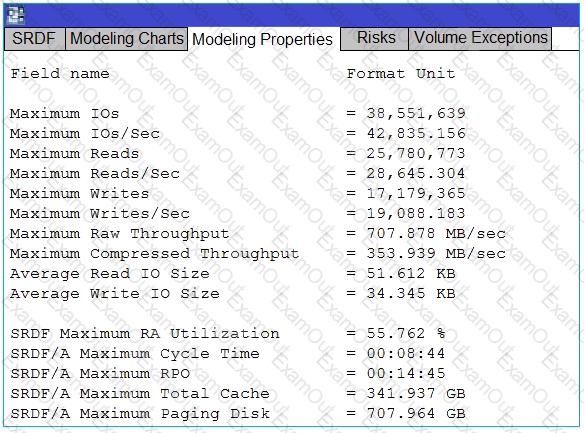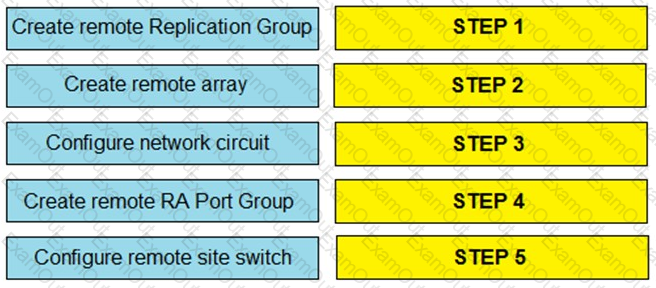At a disaster planning meeting, an architect is presented with the following facts by a client:
A Unix host is replicating storage from a Production PowerMax to a VMAX 250FX.
RDF pairs have been split with Production and DR hosts accessing their respective storage.
Invalid tracks have started to build against PowerMax and VMAX 250FX.
The client now wants to bring production back to PowerMax, discarding the VMAX 250FX updates while keeping the updates on the PowerMax. What is the correct action to take?
A storage architect is designing a PowerMax solution. The architect must ensure that the Unisphere server is not directly connected to the arrays.
Which type of Unisphere for PowerMax deployment will achieve the design requirements?
Refer to the exhibit.

An SRDF/A solution with BCSD is designed and the results are shown in the exhibit. A customer requirement was a five-minute RPO. In the exhibit shown, the RPO is above the customer requirement.
How can the five-minute RPO requirement be met?
How many hosts are supported by PowerPath and PowerPath/VE in the FX software package?
Which legacy modes are supported in TimeFinder SnapVX?
A TimeFinder SnapVX snapshot of source volumes is linked to target volumes. The target volumes are being used for application testing.
What is recommended prior to a relink operation?
An architect is configuring BCSD to design SRDF/S between two new PowerMax arrays. The architect has completed the tasks for the local side of the solution, including RA Port Group, Replication Group, and site switch.
What is the correct order of steps the architect needs to take to complete the SRDF setup?

Which formula is used to calculate the Data Reduction Ratio?


